| Close Up: Cynthia Ruchti |
 |
 |
| Written by Leslie Santamaria | |
| Tuesday, 28 May 2013 05:04 PM America/New_York | |
|
What is the message of Ragged Hope? The core message of Ragged Hope is that even when hope is tattered by the consequences of other people’s choices, it remains strong. Hope may look ragged, beaten up, faded, but that’s perception only. The hope God offers is indestructible, no matter what we’ve done or what’s been done to us. What sparked the idea for this book? In a word, compassion. The prayer, “Lord, break my heart [for] what breaks Yours” was answered more fully than I expected. Listening to “fallout” stories broke my heart and stirred me with admiration for the resilience and tenacity of the survivors. I longed to throw a spotlight on how they pushed through pain and found hope hidden in the folds of the fallout. Why did you choose the particular stories that appear in the book? So many stories remain to be told, but I chose a selection of those that represented both the all-too-common and the inexpressibly painful, hoping that each reader would either sense their own story had been given voice or that they finished the book with a deeper understanding of pain they hadn’t experienced. How did you collect the stories? A sea of stories floated around me in the lives of people I love, those I see every Sunday morning, those I minister to through books and speaking engagements, those against whom I brush in the course of everyday life. I dialed in to listen to their pain and observe the wonder of their incredible survival instincts and God’s intimate responses to them. How has your own life been affected by a decision someone else made? Our family held its collective breath through tension-filled years of concern for our heartbroken son and his toddler children as they walked a very difficult path. We were caught in the tangle of what at times was raw fear for them. We learned more than we cared to about addictions and the justice system, observed, but were unable to change dangerous living conditions and dried the tears of little ones who survived because of their relentlessly faithful father and the grace of God. The fallout from that season has settled, but we have the grandparent version of flashbacks of some of those scenes. How is hope more than simply anticipating when a problem will go away? When God said, “Hope does not disappoint” (Rom. 5:5), He had to have meant more than anticipation for the endpoint of a crisis. Some crises have no endpoint this side of eternity. That verse is linked to the promise of His presence through it all. Our hope is the anchor point that assures us He sees, He hears, He understands, He cares, He weeps, and He is there in the midst of it.
What do you hope readers will gain from this book? A heart more sensitive to the distresses faced by those who live in the aftermath of other people’s choices. Greater confidence that in our own crises, hope is still there, even if it seems hidden or battered. Assurance that—small as they are—our efforts to show ragged-hope survivors they are not forgotten mean more than we can imagine. A clearer understanding of the indestructibility of the hope God offers. When is your upcoming Facebook chat, and what can readers expect there? The Facebook chat is on Aug. 1 at 8 p.m. EDT. Readers will be able to discuss Ragged Hope: Surviving the Fallout of Other People’s Choices, ask and answer questions and win prizes. Readers can watch the Cynthia Ruchti Reader Page on Facebook for details. Is there anything else Christian retailers should know about Ragged Hope? Ragged Hope is the kind of book that soothes rather than stings. Only God can heal the brokenhearted and bind up their wounds [Ps. 147:3], but Ragged Hope holds the jar of ointment, the hand of the hurting one and the hopes of those who care. |

 Latest project: Ragged Hope: Surviving the Fallout of Other People’s Choices (9781426751172, $15.99, Abingdon Press).
Latest project: Ragged Hope: Surviving the Fallout of Other People’s Choices (9781426751172, $15.99, Abingdon Press).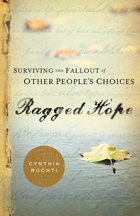 You write that Ragged Hope is not a how-to book, but a celebration. How is that? America both sympathizes with and cheers for wounded soldiers, including amputees from military actions in Iraq and Afghanistan. They’re moving forward. They’re adjusting to artificial limbs and life changes. They’re walking again, running, competing in sports, dancing. They and their families—and all of us—are changed forever by what they endured in the line of duty. But we’re also changed, buoyed in spirit, by their determination to keep moving and step into the bright future, no matter how altered and challenging it might be. Horrific stories. Heroic responses. In that sense, stories like those in Ragged Hope are a celebration of survival.
You write that Ragged Hope is not a how-to book, but a celebration. How is that? America both sympathizes with and cheers for wounded soldiers, including amputees from military actions in Iraq and Afghanistan. They’re moving forward. They’re adjusting to artificial limbs and life changes. They’re walking again, running, competing in sports, dancing. They and their families—and all of us—are changed forever by what they endured in the line of duty. But we’re also changed, buoyed in spirit, by their determination to keep moving and step into the bright future, no matter how altered and challenging it might be. Horrific stories. Heroic responses. In that sense, stories like those in Ragged Hope are a celebration of survival.
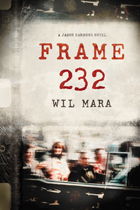 What is the significance of the title?
What is the significance of the title? Latest project: Resurrection Year: Turning Broken Dreams Into New Beginnings (9780849964800, $15.99, Thomas Nelson).
Latest project: Resurrection Year: Turning Broken Dreams Into New Beginnings (9780849964800, $15.99, Thomas Nelson).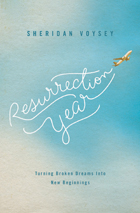 How did your travels before settling in England help you and Merryn move on? Our travels through Europe … helped us to see the “bigness” of life again. The historic and artistic glories of Rome opened our eyes to a larger world than we’d been seeing. The lovely Italian ritual of la passeggiata—an evening stroll through the village when one catches up with the neighbors—was restorative. The natural beauty of Switzerland was overwhelming. All up, our European trip was a chance to play again, to be amazed by beauty and to let some of the dead leaves of our old life float away.
How did your travels before settling in England help you and Merryn move on? Our travels through Europe … helped us to see the “bigness” of life again. The historic and artistic glories of Rome opened our eyes to a larger world than we’d been seeing. The lovely Italian ritual of la passeggiata—an evening stroll through the village when one catches up with the neighbors—was restorative. The natural beauty of Switzerland was overwhelming. All up, our European trip was a chance to play again, to be amazed by beauty and to let some of the dead leaves of our old life float away.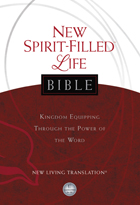 Thomas Nelson is making available its
Thomas Nelson is making available its 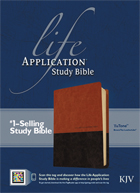 The KJV Life Application Study Bible is available this month in a brown/tan TuTone color combination. The King James LeatherLike edition is thumb-indexed retails for $79.99. The popular Life Application Study Bible features notes that explain difficult passages and give information on Bible life and times. It also shows how the reader can “take it personally,” speaking to life circumstances, and has nearly 10,000 Life Application notes.
The KJV Life Application Study Bible is available this month in a brown/tan TuTone color combination. The King James LeatherLike edition is thumb-indexed retails for $79.99. The popular Life Application Study Bible features notes that explain difficult passages and give information on Bible life and times. It also shows how the reader can “take it personally,” speaking to life circumstances, and has nearly 10,000 Life Application notes.  Edited by Ed Stetzer and Philip Nation, The Mission of God Study Bible in the Holman Christian Standard Bible translation comes in two new colors—desert sand and cameo rose—June 1 from Holman Bibles (B&H Publishing Group). The study Bible includes more than 150 writings from leading voices in the church about what it means to live in the mission of God, and “Letters to the Church” from elder statesmen such as Billy Graham and Jack Hayford speak to the grand narrative of God’s mission in Scripture. Each of the LeatherTouch Bibles retail for $49.99.
Edited by Ed Stetzer and Philip Nation, The Mission of God Study Bible in the Holman Christian Standard Bible translation comes in two new colors—desert sand and cameo rose—June 1 from Holman Bibles (B&H Publishing Group). The study Bible includes more than 150 writings from leading voices in the church about what it means to live in the mission of God, and “Letters to the Church” from elder statesmen such as Billy Graham and Jack Hayford speak to the grand narrative of God’s mission in Scripture. Each of the LeatherTouch Bibles retail for $49.99. ASK THE AUTHOR:
ASK THE AUTHOR: 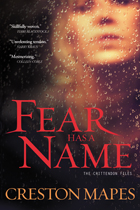 What faith-building ideas do you think readers will take away from this novel?
What faith-building ideas do you think readers will take away from this novel? Pastor challenges believers to follow Jesus as their model and find a ‘whole new way of being human’
Pastor challenges believers to follow Jesus as their model and find a ‘whole new way of being human’